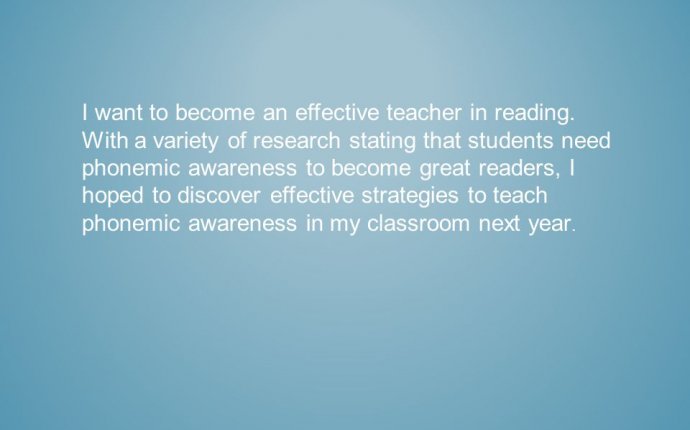
strategies to teach phonemic awareness
Description
Phonological awareness addresses the sounds of language. It does not teach the symbols that represent sounds, but rather the sounds alone. Instruction in phonological awareness includes the following:
Word Awareness
Word awareness is the knowledge that words have meaning. Students with word awareness can discriminate individual words in a passage read to them. Beginning readers must have this skill before they can extract meaning from what they read. For example, a student needs to know that the spoken word dog represents a creature that has four legs and barks before he or she can understand what is meant by the printed word dog.
Rhyme Awareness
Rhyme awareness is the understanding that certain word endings sound alike, and therefore contain the same sounds, such as the short /a/ and /p/ sounds in cap and map or the long /i/ and /t/ combination in fight and kite.
Onset and Rime
Onset is the initial consonant in a one-syllable word. Rime includes the remaining sounds, including the vowel and any sounds that follow. For example, in kite, the /k/ sound is the onset, and the /ite/ sound is the rime.
Syllable Awareness
This is the recognition that words are divided into parts, each part containing a separate vowel sound. A student with syllable awareness can identify bat as one syllable and batter as two syllables.
Phonemic Awareness
This is the student's awareness of the smallest units of sound in a word. It also refers to a student's ability to segment, blend, and manipulate these units. A student with phonemic awareness hears three sounds in the word bat: /b/, /a/, and /t/.
Findings and Recommendations
The National Reading Panel’s findings focus on the phonemic awareness aspect of phonological awareness.
Phonemic awareness can be taught and learned. Effective strategies include teaching students to: identify a particular sound in a word; recognize the same sound in different words; recognize one word that begins or ends with a different sound from a group of three or four words; segment and blend the sounds in a word; and manipulate sounds in a word through deletion, addition, and substitution of other sounds.
Phonemic awareness helps students learn to read and spell. The most effective instruction quickly moves the student from awareness of a particular sound to an association of that sound with a letter symbol. Once letter symbols are introduced, students should be able to manipulate the sounds within words by using the letter symbols.
The best results occur when instruction focuses on one or two phonemic manipulations at a time, rather than three or more manipulations. Several simultaneous manipulations may cause confusion, dilute the teaching of a particular manipulation, or introduce more difficult manipulations before easier ones have been mastered.
Reading A-Z Alignment with Research
Reading A-Z materials support the suggested practices and recommendations of the National Reading Panel in the following areas:
Word Awareness
• Reading A-Z offers many resources for teaching word awareness. Materials that are well suited for "read-aloud" or "read to" instruction include Read-Aloud alliterative books, Alphabet Chants, High-Frequency Word books, and Alphabet Books.
Onset and Rime Awareness
• Strategic lessons that teach word families (phonograms) are part of Reading A-Z’s systematic phonics lessons. Blending and substitution activities are included in these lessons.
• Phonogram Flashcards can be used in word manipulation/building activities.
Rhyme Awareness
• Reading A-Z offers two types of books for teaching rhymepoetry books and Leveled Books with rhyming text.
• Alphabet Chants are excellent resources for teaching rhyme awareness.
• Picture flashcards with objects whose names rhyme can be used in sorting and classifying activities as well as oddity tasks.
Syllable Awareness
• Lessons in selected Leveled Books provide strategies for teaching syllable awareness.
• Picture cards with objects whose names contain different numbers of syllables can be used in sorting activities and oddity tasks.








